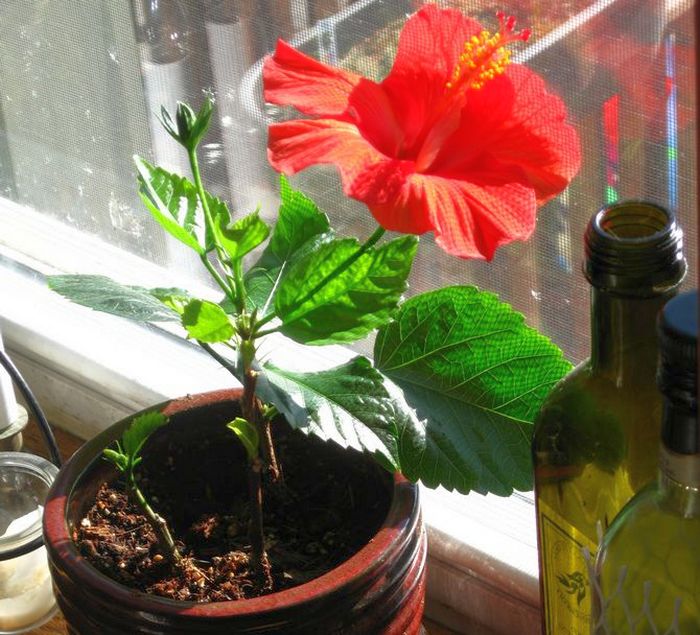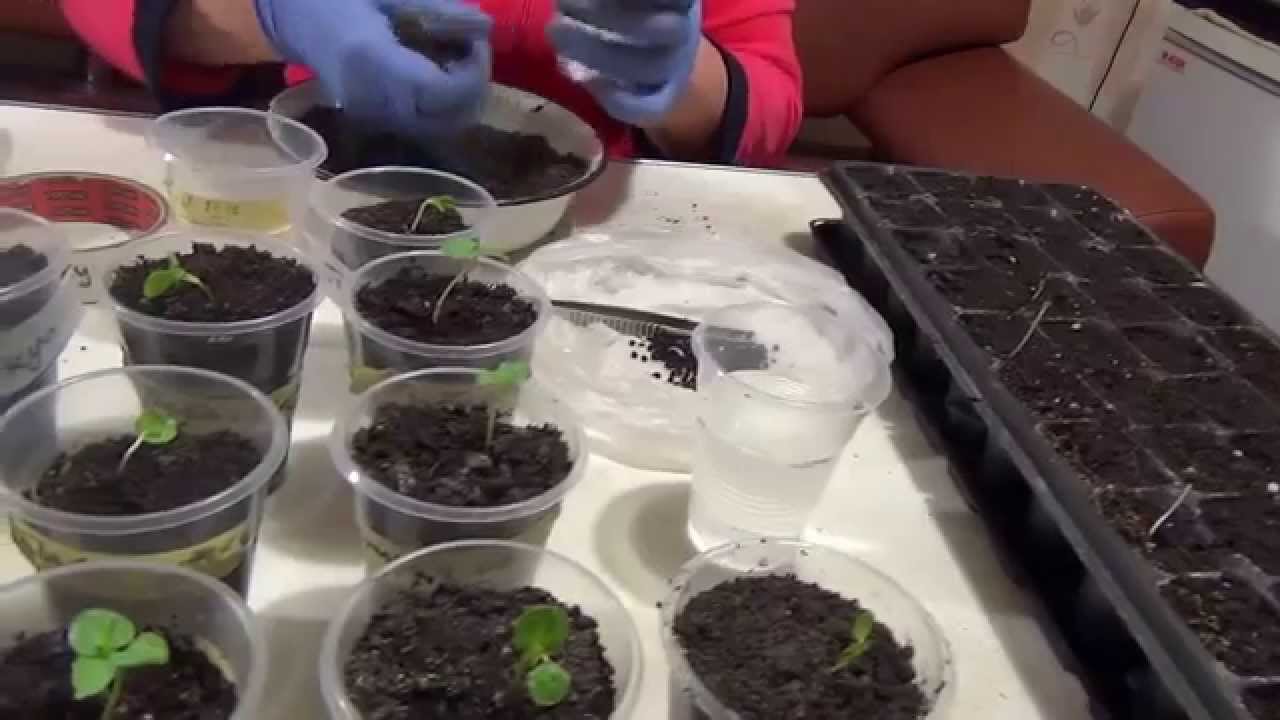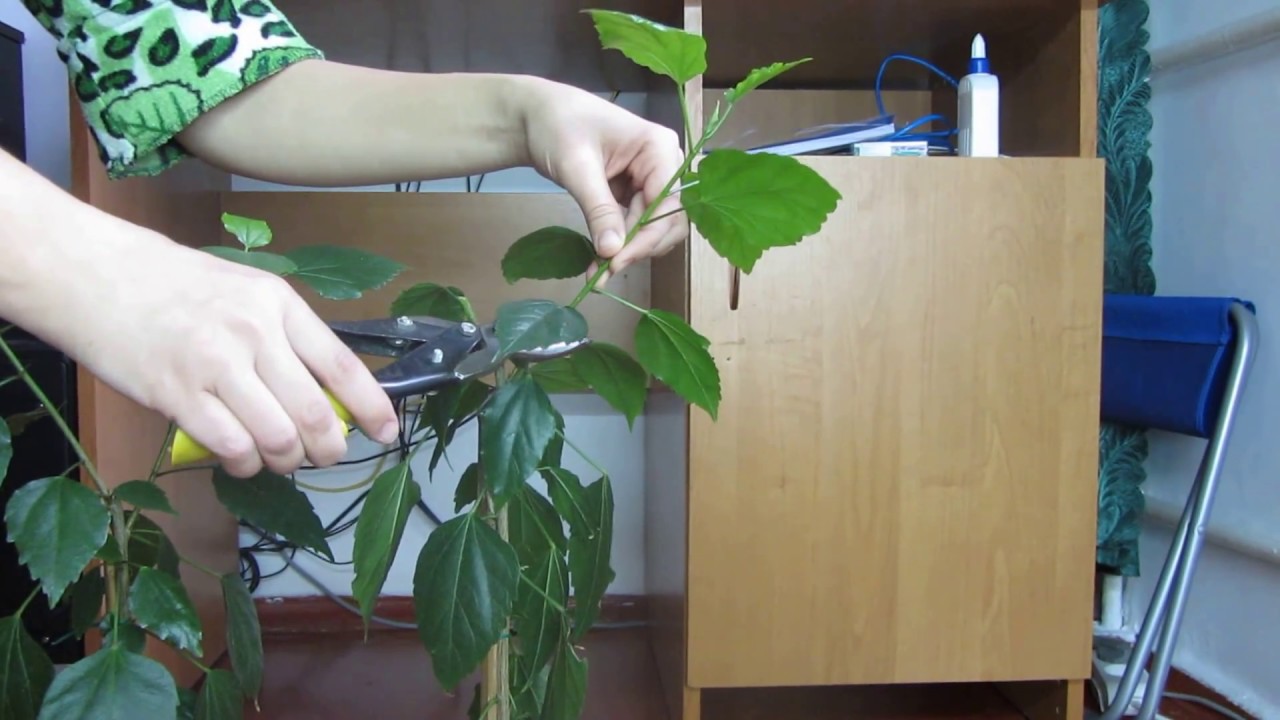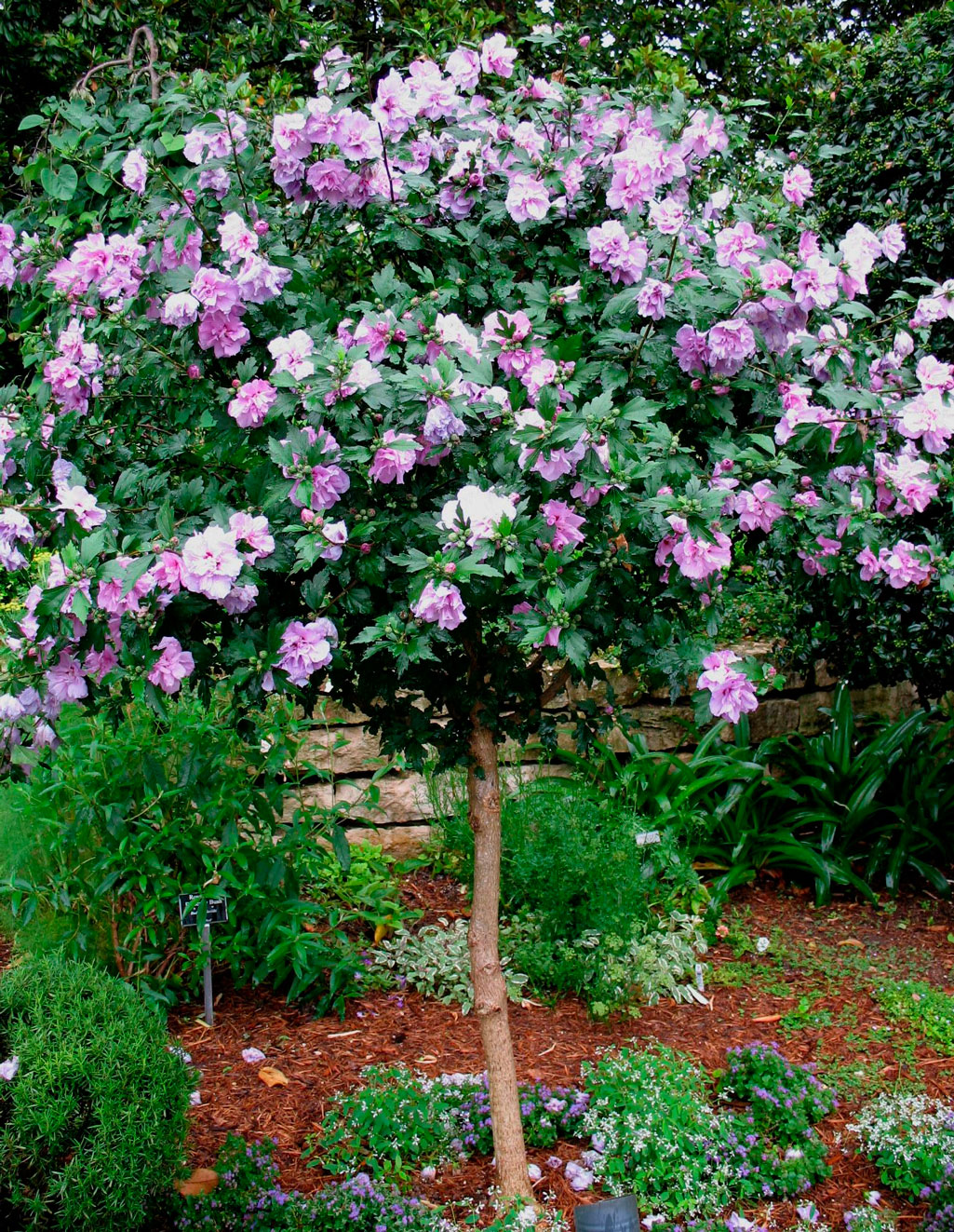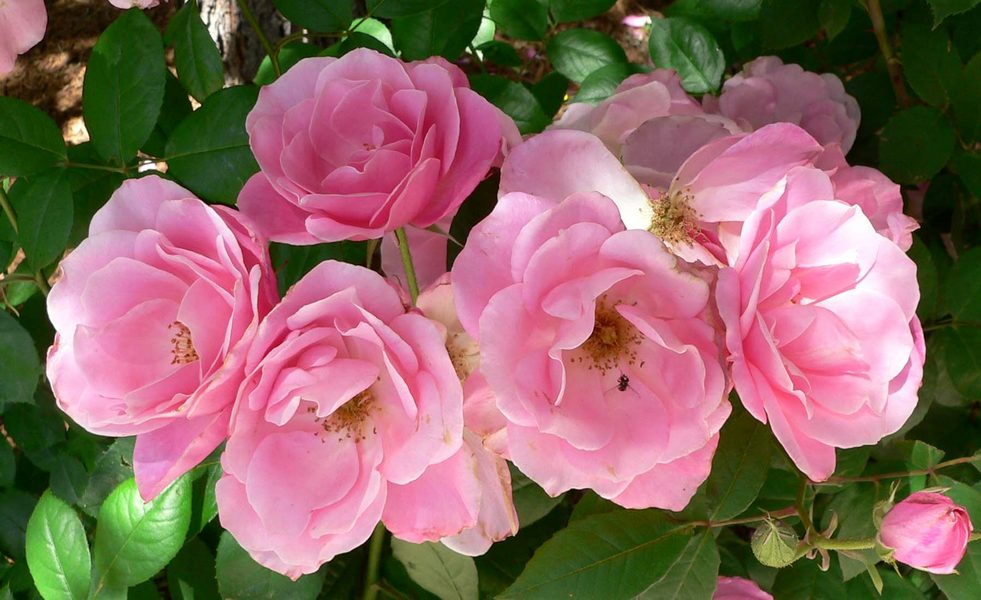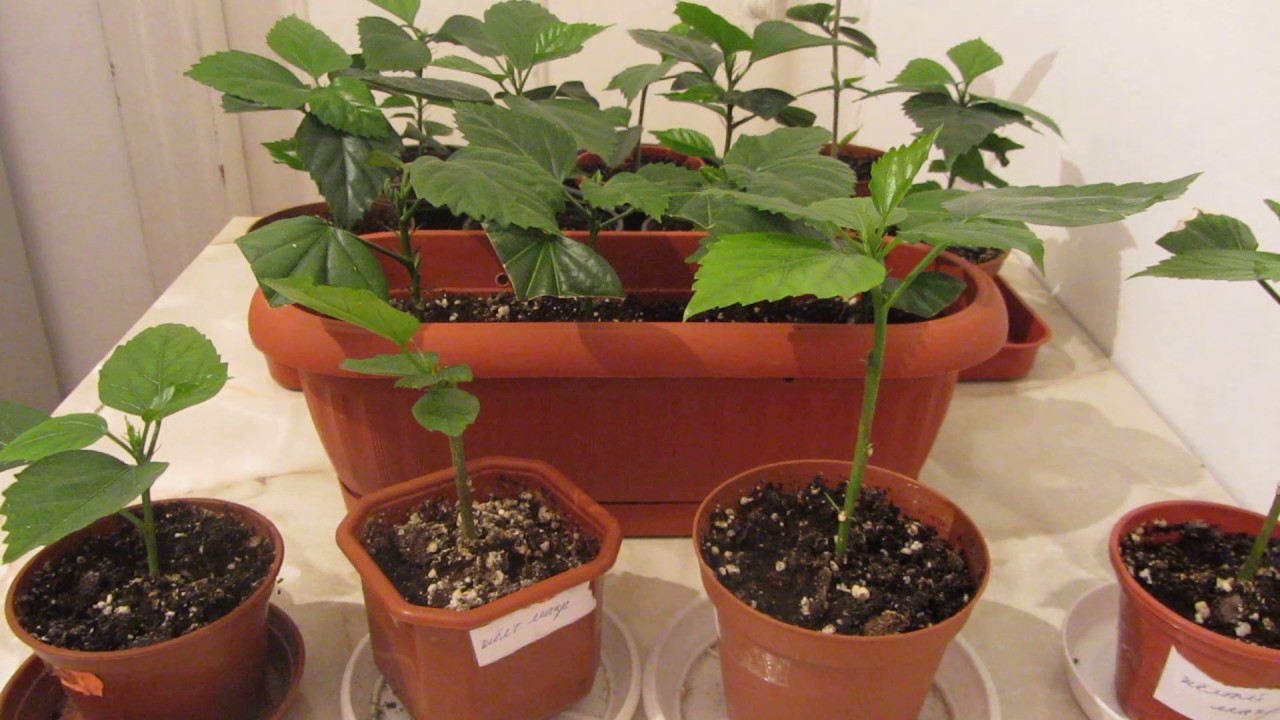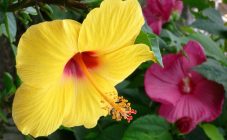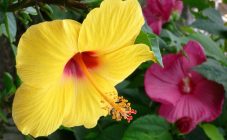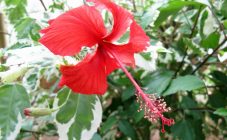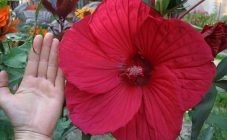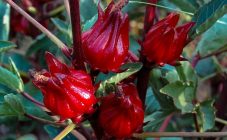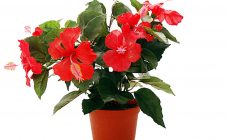Content:
Hibiscus garden flower (Hibiscus) is a flowering plant. It belongs to the Malvov family. The genus was given the ancient Greek name Alcea rosea L. Natural habitat - South China, India.
The flower is distributed in tropical, subtropical countries of the Old and New Worlds, the Mediterranean, North Africa, Asia, and the Middle East. In Russia, the plant is grown as an indoor or outdoor crop.
A bit of history
Hibiscus has a different name - the Chinese rose. In Brazil it is called "princess earrings", in Hawaii - "the flower of beautiful women."
And in Malaysia, the culture is called Bungaraya or "flower of love." In addition, he is the national symbol of this country. He is depicted on the coat of arms and coins.
More recently, in the USSR, the Chinese rose was grown in almost every home; it adorned foyers, halls, corridors of hotels, clinics, hospitals, trading halls of pharmacies, shops, premises of government institutions.
In European countries, hibiscus is considered the "flower of death", an energy vampire capable of bringing illness, misfortune, and grief.
In the East, they say that the Chinese rose brings positive energy, love, happiness, and quickly fading flowers take on all adversity, avert troubles.
Why Hibiscus
First of all, these are decorative qualities, for which many growers love the culture so much and plant it everywhere on the streets (in the southern regions), as well as at home as a pot culture.
In addition to making the healthiest hibiscus tea, add its seeds, young leaves, flowers, fruits (except roots) to various dishes. Dye is made from hibiscus inflorescences (food - purple, for hair dye - black).
The plant is used for medicinal purposes: flowers and leaves are taken for medicinal infusions. Spinning fiber is made from hemp hibiscus (Kenaf).
Why hibiscus is useful
Hibiscus hibiscus tea contains various trace elements, vitamins. A cold drink lowers blood pressure, while hot drinks raise it.
The plant has the ability to strengthen blood vessels, increase their elasticity. It acts as an antispasmodic, choleretic, diuretic, anthelmintic, antipyretic agent.
Infusions made from hibiscus leaves and flowers are used for diseases of the liver, gastrointestinal tract, hemorrhoids, they perfectly strengthen the immune system.
There are also contraindications:
- acidity gastritis;
- peptic ulcer;
- individual intolerance.
Use with caution:
- hypotension (low blood pressure);
- kidney disease;
- pregnancy.
general characteristics
There are about 300 varieties of hibiscus in the world. These are evergreen, deciduous trees, shrubs, as well as perennial and annual grasses.
Different types of hibiscus have different heights. In the natural environment - up to 20 m wide. The usual growth of bushes and trees is 3-5 m. At home - 0.5-2 m.
The branches of plants are spreading. Trunks, shoots are brownish, black. Their leaves are incised, petiolate, shiny.
The flowers are large, funnel-shaped (funnel sizes 6-15 cm), bright, simple (have 5 petals). There are also terry inflorescences of complex shapes. The diameter of the flowers ranges from 5 to 30 cm. The buds bloom in turn. Fruits are capsules with five leaves. They contain seeds.
The range of colors is quite extensive and includes almost all colors except blue and black shades. There are also bicolor, variegated, striped, edged specimens.
Hibiscus blooms in early spring, blooms for a long time until autumn (October), sometimes in winter. Certain varieties of the culture are quite frost-resistant, withstand temperatures of -20-25 degrees.
Types and varieties of hibiscus
The plant has several classifications. One of the varieties distinguishes three main types according to the form of culture.
Grassy look
It appeared as a result of crossing a red, pink, holly plant. This perennial is bush-shaped. Its branches are large, erect.
In one season, the bush acquires a height of 3 meters. The leaves and flowers are very large. Flowers, 40 cm in diameter, are painted in white, pink, red, burgundy tones. The culture blooms in the second half of summer - the end of autumn. If it is well spud, it will withstand frost down to -30 degrees.
Shrub species
Perennial, deciduous, slow growing shrub. Plant height is usually up to 3 m. Sometimes the bush grows more, up to 5 m. It blooms profusely, for a long time, throughout the season.
The flowers are incredibly beautiful, multi-colored, medium-sized - about 20 cm. Their feature is called a long pistil, as well as a luxurious lush stamen.
Tree view
The tree is single-stemmed, its height is 6 m. The plant is unpretentious, winter-hardy, blooms profusely, for a long time. The leaves are large, bright green. The flowers are small, 12 cm, simple and double, have multi-colored colors. The plant blooms 2-3 years after planting.
Hibiscus has a large number of varieties, only three of them are grown in the Central lane in Russia:
- Syrian hibiscus. It is a deciduous shrub 5-6 m high. Its homeland is China. The plant has ovoid leaves, bright green shades. Their length is 10 cm. The flowers are single, of various colors. The plant is grown with a bush or on a trunk. The most common varieties: Diana, Vayelit ilar double, Pink giant, Carneus plenus;
- hibiscus trigeminal (trifoliate). This species branches quite strongly, 80 cm high. It comes from Africa. It is widely grown in regions with irrigated agriculture. The flowers are yellowish, with dark red centers. Their diameter is 3-4 cm;
- hibiscus hybrid. Perennial herb bush. It appeared as a result of the selection of American varieties of the plant - a bright red, holly (armed), marsh species. The culture is distinguished by large flowers of various colors. Popular varieties: Youth, Pink-porcelain, Late.
A few more interesting varieties:
- Sudanese rose (Rosalia). It is of Indian origin, distributed in the zone of tropical islands. Hibiscus tea is made from its petals;
- hibiscus Kenaf (hemp). It grows in the tropics. Used in textile production;
- hibiscus okra. Perennial herbaceous species. The flowers are large, delicate cream, beige tones. The plant has edible pods.
Chinese perennial garden rose: planting and care
Agricultural technology of cultivation
Hibiscus is planted or transplanted in the spring, when the threat of return frosts recedes. Over the summer they will take root well, get stronger.
For a flower culture, it is necessary to choose a sunny, bright, protected from winds, drafts area.
The Chinese street rose prefers light, fertile, humus-rich soil. It is desirable that they be loose, breathable and drained. These should be neutral or slightly acidic loams.
Training
Before planting a hibiscus street flower in the open ground, you need to prepare the soil. Its composition:
- land (2 parts);
- peat (4 parts);
- sand (1 part).
As you know, peat is acidic. To neutralize it, you need to add wood ash - 0.5 cups, complex mineral fertilizer - 1 tbsp. spoon for 2 liters of soil.
Landing
- Digging a hole. It should be twice as large as the root system of the plant.
- A choice of drainage is poured at the bottom of the pit: expanded clay, crushed stone, crushed brick (10 cm thick).
- They lay sand, compost, and more sand. Each layer is 15 cm. Pour water, wait until it is absorbed.
- Set the seedling. The root collar is slightly deepened.
- Fall asleep with prepared soil, spud, watered. Then add soil to level the near-trunk zone.
Care
The Chinese rose is watered abundantly, but not often. Wait for the topsoil to dry. In dry, hot weather, watering is increased and irrigated almost daily.
Hibiscus is fed every 14 days. Potash fertilizers are used in the spring. During the summer season - phosphorus, nitrogen fertilization.
They systematically loosen the soil around the trunks, weed weeds.
Sanitary pruning is carried out in the spring. Sick, weak, damaged, dried branches are removed. Form the crown. Plants are rejuvenated, very old branches are removed, young ones are cut by 1/3.
Preparing for winter
In temperate areas, hibiscus should be covered.
At the beginning of September, potash-phosphorus fertilizers are applied. Water the plants abundantly. After the top layer of the soil dries, they spud high enough.
When the first frosts are established, the near-trunk zone is covered with shavings, sawdust, dry leaves. The branches are bent to the ground, fixed, wrapped with non-woven material in several layers. Arrange a frame over the plants. Warming agents, coniferous branches are thrown over it.
Reproduction
The Chinese rose is propagated by seeds, cuttings.
Seed method
It is used in winter - early spring (January-March).
- The achenes are soaked for 30 minutes in a saturated solution of potassium permanganate, then in a growth stimulator for 24 hours. Sow them into a wet mixture of sand and peat (1: 1).
- Cover with glass or cellophane wrap. Comfortable temperature +26 degrees.
- Periodically moisten, ventilate, provide additional lighting.
- When two real leaves appear, the seedlings dive into separate containers. Blooming will be only after 2 years.
- With the onset of heat, the pots of plants are taken out into the street. In the fall, you should bring them indoors.
Cuttings
The procedure is carried out in the summer.
- Cut the cuttings. They should have 2-3 internodes.
- The cuts are treated with stimulating agents (Epin, Kornevin).
- Petioles are planted in peat. It is necessary to provide them with heating from below. They are also placed in a jar of water.
- After the sprouts take root, they are seated in different pots. They are waiting for lateral shoots to appear.
- Pinch the plants to make them branch.
- When the bushes are formed, they are planted in the garden. Flowering is possible in the same or next year.
- You can plant them in flowerpots to bring indoors for the winter. This will protect young plants from frost.
Diseases, pests
With chlorosis, the lower leaves fall off, new leaves grow yellowish. It is sprayed with Iron Hilate, fed, treated with Fitoferm every 3-4 days. Use the Emerald.
If powdery mildew has grown, use Sulfur powder, Fundazol, Bayleton.
For spider mites use Fitoferm, Derris.
With aphids - treated with the drug Decis, Inta-Vir.
And if scale insects were found on the plant, then they are removed manually, sprayed with insecticides.
It is not difficult to grow a hibiscus street flower - even a novice gardener can handle it.
